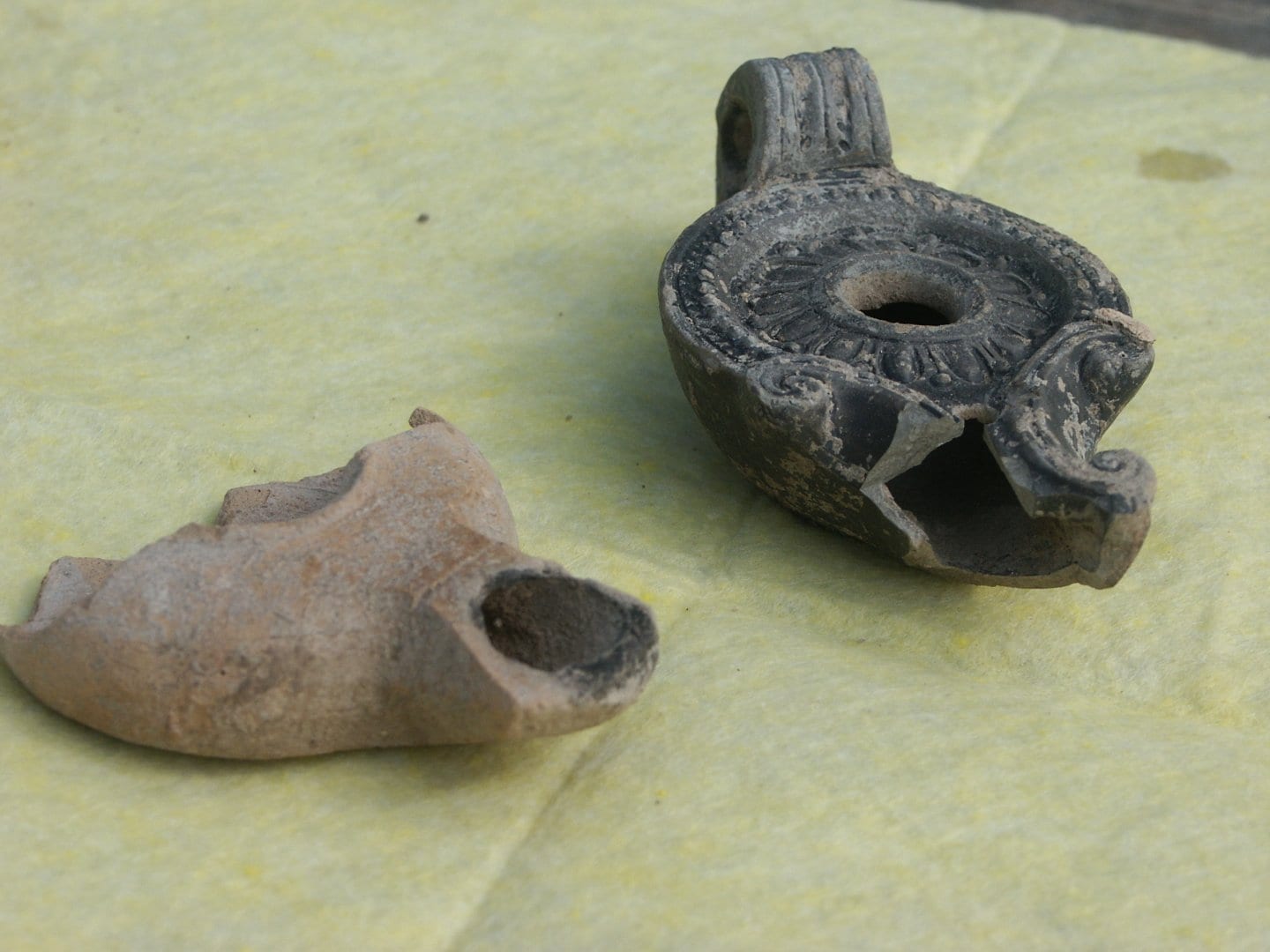
Horvat ‘Aqav and Horval Eleq – the Roman Period
Excavations in Horvat ‘Aqav at Ramat Hanadiv revealed the remains of a building with living quarters and industrial facilities dated to the Herodian Period. The excavations revealed rings, many clay utensils, oil lamps, and an additional finding indicating that the site served as an agricultural farm. A terraced, whitewashed structure was identified as a ritual bath.
Excavations in Horvat Eleq revealed remains of buildings and rooms next to and outside of the contour of the Hellenistic wall. Agricultural facilities for the production of agricultural produce indicate that this site also served as an agricultural farm. Many findings, including rings, shards of clay utensils, and locally made and imported oil lamps, indicate that this site served as a local centre during the Early Roman Period. Next to this site were an olive press and a pigeon-rearing facility (columbarium), and in the spring an aqueduct and pools were constructed and a bath house was built, demonstrating the status, livelihood and culture of the site’s inhabitants. However, in contrast to the findings in Horvat ‘Aqav the findings in Horvat Eleq indicate continuity during the period between the two rebellions and throughout the entire Roman Period.
The Roman Period in the Land of Israel is divided into the Early Period and the Late Period. During the Early Roman Period the Jewish settlement in the Land of Israel rebelled twice against the Romans. This period also includes the Herodian Period, which extended from Herod’s rise to the throne (37 BCE) until the destruction of the Second Temple in Jerusalem in 70 CE, at the end of the Great Revolt. The end of the Early Roman Period is dated to the end of the second rebellion, the Bar Kokhba Revolt, in 137 CE. The Late Roman Period extended from 137 CE until the rise of Constantine the Great in 324 CE and the beginning of the Byzantine Period.
